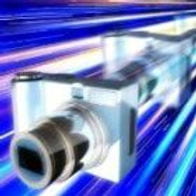Serial Time-Encoded Amplified Microscopy (STEAM)
Research | Serial Time-Encoded Amplified Microscopy (STEAM)

STEAM is a new type of imaging modality for continuous real-time observation of fast dynamical phenomena such as shockwaves, chemical dynamics in living cells, neural activity, laser surgery, and microfluidics. STEAM maps the spatial information (image) of an object into a serial time-domain data stream and simultaneously amplifies the image in the optical domain. It captures the entire image with a single-pixel photodetector, not
by a CCD or CMOS camera. With the optical image amplification, STEAM overcomes the fundamental trade-off between sensitivity and frame rate – a predicament that affects virtually all optical imaging systems. As a result, STEAM can achieve ~10 MHz frame rate and ~100 ps shutter speed, enabling real-time observation of rapid transient processes in physics, chemistry, and biology.
